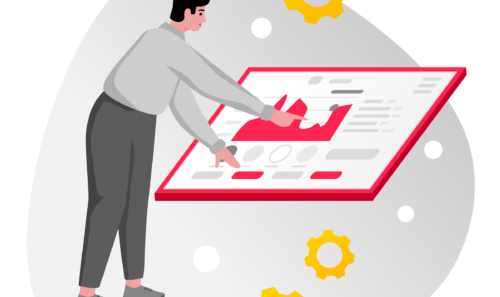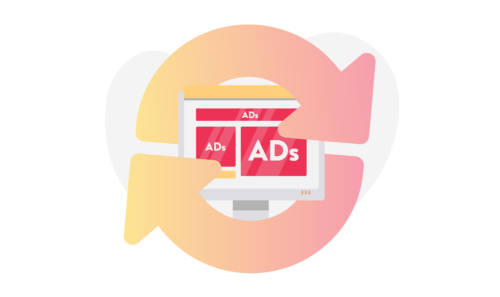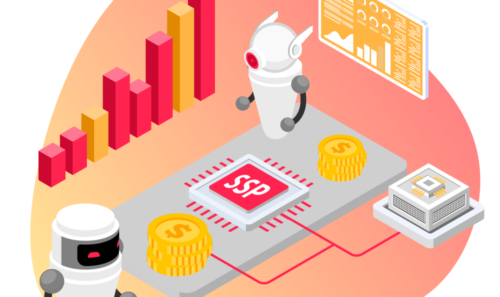First or Second-Price Auctions: Does It Really Matter for Publishers?
Google advertised in March 2019 that it will start applying the first-price auction mechanism for its publisher services. The question is what this change will mean for the industry. Several exchanges have already started testing out first-price auctions.
First and second-price auctions are actually old economic theories outside of programmatic. They are called English auctions and Vickrey auctions, respectively.
Professor William Vickrey invented The Vickrey auction in 1961, and received The Nobel Prize for Economics in 1996.
Second-price auctions are not only applied in the programmatic industry; the format was invented and used by national banks worldwide. It is often used to issue government debt securities because the banks submit secret bids and the winner pays marginally more than what the “second” offered.
Do you like what you’re reading? Subscribe our newsletter for more content like this!
Google
Google AdWords launched with 350 advertisers in 2000. Today, more than 1 million advertisers generate tens of billions in revenue for the company.
Google launched the second-price auction as its auction mechanism, and when programmatic arrived in early 2010, it adopted the second-price mechanism as well.
Why did Google launch AdWords with this somewhat difficult logic?
It takes its point of departure from the buyer; this was something Google realized early on. The company’s goal was to launch a volume product for non-deployed advertisers.
Second-price bids give the advertiser the opportunity to set a high bid, which reflects the ceiling for how much it is worth, but in fact, they only pay one cent more than the one who offered the second highest. This is considered a fair and functioning model, provided there are many bidders in the auction.
Already from the start of programmatic, there were several SSPs that tried the possibility of using the first-price auction (the English auction).
It is also the auction model that is applied worldwide among classic auction houses such as Bonhams, Christie’s, and Sotheby’s. The feedback from the buyer side when mixing first and second-price auctions was loud and clear.
Don’t mix models, it screws up our day!
Why this feedback? The different pricing models require completely different buying tactics.
In the world of first-price, advertisers have to apply a lower bid strategy since they will have to pay the exact bid from the auctions they win.
With the second-price in the DSP, however, the difference between the bid and the closing price is often large. In this way, the advertiser can place the bid that they consider worthwhile, but know that, in reality, they will pay a lower price.
Now we may see a future with mixed-auction models, which is perhaps a reality if Google launches the first-price auction. For some time, exchanges like OpenX, Index Exchange, and Rubicon Project have been testing first-price auctions.
Mixing the models without having the bid type clearly flagged in the RTB call poses problems. Right now the market is in the middle; some flag bid type and others do not, which is an issue for the market. Standardization is needed!
What might drive the shift towards the first-price auction model?
All SSPs and yield-optimization companies like Yieldbird have implemented strategies (in our case, machine-learning mechanisms) for dynamic floor price optimization in order to increase revenues for the publisher.
Header bidding is now a commodity and also a driver of complexity and mixing of auction models.
The drive may also be because of the claimed non-transparency and hidden commission in the programmatic ecosystem.
The article below focuses on undisclosed fees and non-transparency.
“The Guardian is suing Rubicon Project, alleging the vendor siphoned undisclosed fees from programmatic advertising buys across its site. Rubicon Project has since filed a counterclaim, denying liability.” Read more.
In a world with first-price, it is tremendously harder with shady, hidden commissions. On the other hand, several of the “commission receivers” might be really happy with the commissions.
Recently, I met a Nordic agency that received a 15% kickback from a DSP. For an agency, that’s a lot of additional profit, and do they want to refrain from that?
Does the first or second-price really matter for the publisher side and yield optimization?
Sure, it will increase the complexity and increase the workload for yield managers. Now you also have to consider bid type when you do your daily floor optimization among buyers and exchanges.
Basic yield optimization functions on a theory known as the Laffer Curve.

The Laffer-Khaldun curve (the latter name after the Arabic mathematician Ibn Khaldun, also referred to simply as the Laffer Curve, is a concept within the macroeconomic theory to describe the elasticity between income and tax revenues. According to this theory, Arthur Laffer stated, the state can maximize its tax revenues by setting the income tax at the optimum level.
This is the basic model also used for yield optimization, both manual and machine learning. Highly simplified, this means trying to find “optimum”, i.e. the point where you raise the floor price so much that the revenue reaches its maximum. If you increase the eCPM, the total revenue decreases. Whichever auction model is applied doesn’t matter, it’s still about finding the optimum level.
If in two years’ time we live in a world of only first-price auctions, it is still absolutely crucial for all yield managers to find optimum for each given floor price per placement.
With the first-price auction, it is resolved with a yield algorithm that calculates which floor will apply for each placement and for each buyer.
It sounds easy but imagine the complexity. We at Yieldbird have several publishers who have over 100,000 bidding advertisers in a placement over a single month. The same publisher can have more than 500 different placements.
Optimum
Calculating optimum and changing prices continuously to adapt to the week’s fluctuations means that maybe 1–2 million floor-price adjustments are needed to reach optimum. It is because of this that our world, yield optimization, is about machine learning and neural networks, which themselves adapt to fluctuations and changing prices, all in order to reach optimum. And this is regardless of first or second-price.
Let me conclude and summarize
I do not think it matters what the auction model will be in the market!
What determines which one wins depends on advertisers, as they stand for the money and always ultimately decide. If they think it is too difficult or expensive with first-price auctions when they buy from their DSPs, they will probably allocate more money to AdWords, which will still apply the second-price.
Google has a well-known monopoly position in AdWords, but not on the SSP / DSP page, so thought might be that the discussion about the auction models is really about getting the buyers back to AdWords again.
Whatever the case, it is more necessary than ever to apply robot optimization in yield management as the parameters are more than what a person can handle.
AI & Robots
If you are curious around robots and AI, take a look at Boston Dynamic. It is far from the programmatic world (even if it was owned by Alphabet / Google in the past) but underlines how fast data-driven technologies evolve.
If you have any questions or concerns, you are welcome to contact me.







